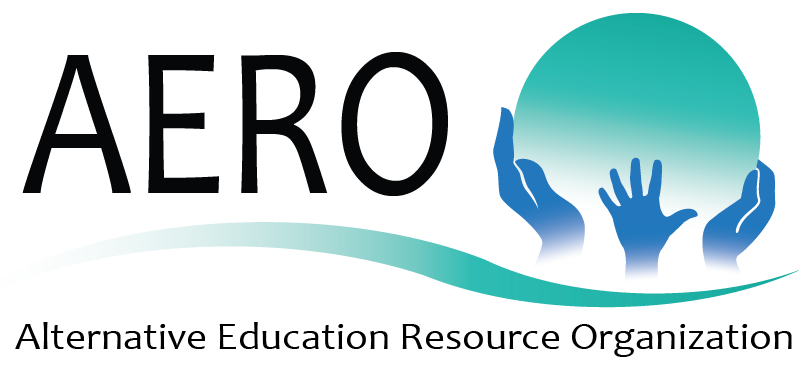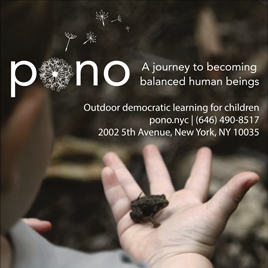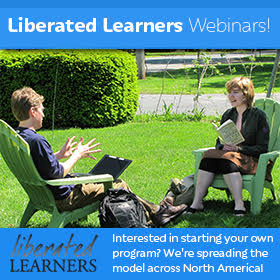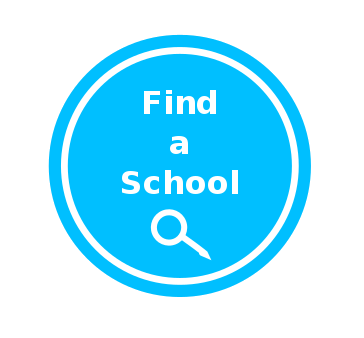Category: Articles
Huge Opt-Out Rally: AERO’s Stand
By Jerry Mintz
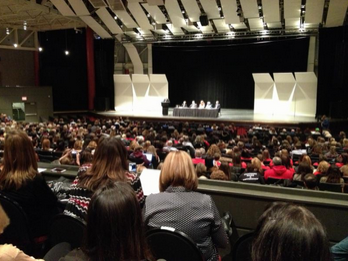
The Idiocy of Teacher Pay for Performance
By: Adam W. Jordan, Ph.D.
Walter Parker (2003) warned us of the danger that idiocy poses to democracy and unity. Before jumping to conclusions, let me explain. Parker stated, “‘Idiotic’ in its origin is not what it means to us today- stupid or mentally deficient. This recent meaning is entirely and deservedly out of usage by educators, but the original meaning needs to be reclaimed. It is an ancient Greek term that shares with ‘idiom’ and ‘idiosyncratic’ the root idios, which means private, separate, self-centered- selfish” (p. 2).
Recently, an “idiotic” idea has emerged in public education. This idea centers on the notion that performance pay for public school teachers would serve as a unifying strategy to promote better “performance” from both students and teachers. In most states, teachers typically receive pay raises based on two variables: time spent devoted to the field and highest degree earned. This is not universally true. North Carolina, for example, has done away with pay for advanced degrees and they’ve watched countless educators leave the state as a result. But, this is a general approach to teacher pay. At the heart of the pay for performance argument is the assumption that teachers gain no benefit from pursuing higher education beyond initial certification at the bachelor’s degree level. Well, at least no benefit that translates to student performance as measured through standardized testing.
Before I get too far, let me say that I am not anti-testing. When testing is ethical, purpose-driven, psychometrically sound, and done with the intention of supporting a child I have no problem using testing as an assessment measure. However, considering the current idolization of the standardized test score as a political platform, I’d say we have long left behind the needs of children for the incessant need to compete, rank, and simplify.
There are many reasons why teacher pay for performance is a terrible idea, but perhaps the most prominent is the fact that teacher evaluation is much more complicated than most folks would like to believe. In my home state of Georgia teachers are currently evaluated with a combination approach through a system called the Teacher Keys Effectiveness System (TKES). Under TKES, part of teacher evaluation involves multiple administrative observations that monitor compliance with pre-determined standards as well as input from student surveys. For tested subjects, another piece of the evaluation includes what is lovingly referred to as a “growth model.” Basically, teachers are evaluated on how much they can influence a student’s standardized test score. This type of evaluation is essentially what is known as a Values Added Model, or VAM. While that may seem fair enough, the American Statistical Association (ASA) has warned that basing teacher evaluation on values added models is just not smart. According to the ASA (2014), studies that look at these models have typically found that “teachers account for about 1% to 14% of the variability in test scores” (p. 2). If that math seems ridiculous to you, thank a teacher. It turns out there are other obvious variables that play a large part in attempting to explain test score variability, such as ability status, socioeconomic status, and a host of other variables that are more than obvious to anyone who has spent any time in a public school classroom.
So, frankly, the first and most obvious argument against teacher pay for performance is that performance is not so easily measured.
However, as a teacher educator, this issue goes much deeper than statistical reasoning in my mind. For me, this issue goes right back to the idiocy that Walter Parker has warned us about. As a whole, we are becoming selfish and disjointed in public education. We are proposing ideas that are capitalistic and competition driven. Students are becoming products to be assessed for quality assurance in order for us to receive the praise we believe we deserve. Here is the kicker, though… That “we” certainly doesn’t describe too many teachers that I know. It sure does, however, represent the mainstream view of the policies that are governing us.
With the conversation of teacher pay for performance comes the obvious co-conversation that graduate degrees don’t amount to much in education. Under this view there isn’t much value placed on engaging in critical reflection, developing global citizenship, considering education as a human right, addressing racist issues head on, closing the Opportunity Gap, or promoting inclusive education. All of those things are at the heart of a graduate degree in education. It is a fair assumption to say that graduate degrees are not test-centric. It turns out there aren’t too many people that go in to education so that their students can all score in the 99th percentile on whatever standardized test is thrown their way. If you ask most teacher candidates why they want to teach the response is usually, “I care about children and want to make a difference.” Sounds good to me. In fact, therein lies one advantage of a quality graduate education. As most teachers are naturally focused on the emotional well-being of students, a graduate education has the potential to draw on that important value and continue to develop the promotion of academic and intellectual student development. Just as we strive to educate the whole-child, does the notion of a whole-person vanish upon the reception of a bachelor’s degree? Hardly. Good teachers want to do whatever is necessary to support whole-students.
Why, then, don’t we start supporting teachers devoted to whole-student education? In the ever growing effort to rank and sort we are losing sight of the merits of a quality education. If we continue to rank and sort then teachers will become the performers they are expected to become. Instead, what if we looked deeper at what it means to teach and save the performances for Hollywood? By supporting student-centered teachers both in formal university education programs as well as within school communities a culture shift may soon follow that makes a performance-centric conversation unnecessary. Support the teachers that are creating thinkers, innovators, citizens, neighbors, entrepreneurs, activists, and peacemakers. Those fruits are much sweeter than the 99th percentile. When we support student-centered teachers we will begin to see student-centered teaching as the norm. If we promote cut-throat, test-driven teaching, well, that will become the norm. We have a choice. There is still time. As a citizenry, we are selling ourselves short if we continue to focus on our incoherent demands to see teachers produce standardized performers.
If we continue to push for measures that compare, rank, and sort instead of fostering reflective, learner-centered collaboration we are destined to become “idiots.” When conversations of teacher performance pay and the uselessness of a graduate education become reasonable topics we should stop and think about how selfish we are becoming. When our conversations place students as outside variables to be measured we are becoming self-centered and not learner-centered. When we communicate to our teachers that we care only about the test scores they can produce and not the development of the democratic focused global citizens we need, we are in serious trouble.
It is time for a learner-centered revolution in public education. As learner-focused educators we have to stand up, speak our voice, and let it be known that we place the well-being of our students above all and we are committed to stand against any measures that would endanger their opportunities. Let’s let it be known that we won’t stand for our schools, our profession, or our very selves being turned into capitalistic cogs in the educational machine so many are attempting to build.
Adam W. Jordan is an assistant professor of special education at The University of North Georgia where his research interests include educational alternatives and learner-centered education. He taught in a public alternative school in Siler City, NC with wonderful, diverse, tenacious children. He can be contacted at adam.jordan@ung.edu
An education in a democracy of freedom without concessions
At Clearview Sudbury School in Austin, Texas, all staff members and students -even the youngest among them- have a voice and a vote that carries the same weight in decisions going beyond what they wish to learn and the rules governing their interactions. The school meeting decides over all matters regarding the management and operation of the school, including its finances, the hiring of the staff, and the decision to approve the request that made my visit possible.
The day I visited, I arrived at the school at approximately 9:00 am. The school is open from 8:00 am to 5:00 pm, and students can arrive at any time before 11:00 am as long as they complete an attendance requirement of at least 20 hours per week.
This school is not affiliated to any religious group, but it is located in a small building that a church shares with it. It is worth mentioning that the school is surrounded by a park and large green areas in a very lovely neighborhood.
Upon my arrival, the first impression I had crashed against all stereotypes regarding the popular notion of what a school looks like. I could not see desks and blackboards anywhere; there were no uniforms; several students were not wearing shoes inside the school; and no one, including the staff members, was wearing formal dress.
On this day, the school meeting had programmed a trip to Thinkery, one of those interactive museums where children can play freely with all the exhibits. Usually, the parents cannot stay with their children at school, but this day several of them had volunteered to facilitate the school trip. This way, groups of two or three students would be free to go anywhere inside the museum, not having to depend on the decisions of a much larger group or an itinerary. While we spent some hours at Thinkery, some students decided to stay at the school with one of the staff members.
During the time I spent at the school, I had no restrictions. I was allowed to talk to all staff members, several parents, and many of the students.
Among those parents with whom I was able to spend time talking, some explained to me that they wanted an opportunity for their children to grow happier and healthier. This is the reason why they took the decision to give them this type of education. Others took this decision because they had already had bad experiences in the traditional school. In one instance, a father told me that he did not want his son to be labeled. It happened that his son understood the school content but he did not feel the need to prove this in writing. I know that in this case, even if the teacher had been understanding, it is very likely that she wouldn't had been allowed to keep a student off-task. It would've been almost impossible as well to prevent the student from taking standardized tests. The parents of this child had already tried with homeschooling, but that had proven to be frustrating.
Among the youngest children, I was able to observe a great self-confidence and assertiveness in the way they approach adults -to whom they always address by their first name. A little girl told me that her mother teaches Spanish, and very sweetly and politely, she also told me: “I know some words in Spanish, but I'm not in the mood to say them right now”. Afterward, she made me several questions, inquiring about the bilingual class that I used to teach in Dallas. She wanted to know if my children knew how to speak English and when we spoke Spanish. She was very curious about the fact that my children understood English but they always preferred to speak Spanish.
I believe that in any other environment, this same child would've felt somewhat obliged to tell me those words she knows in Spanish. It is obvious that the children at Clearview Sudbury School are not there to obey or to satisfy adult expectations. It is also obvious that they can establish more direct and horizontal relationships. This is an important difference with many of the public schools in Texas, especially in the poorest areas of urban districts, where there are rules designed to create a great distance between students and adults. In order to consolidate adults as authority figures, teachers are sometimes advised to never smile to children or allow them to hug them. This is another reason why teachers must were formal clothing.
But perhaps the largest contrast with the traditional school has to do with having an environment in which everyone can feel relaxed. There is no pressure to follow a schedule, and time seems to run slower. Sometimes it even seems to stop. Around here, no one is worried about proving that something concrete is being learned or that something even remotely productive is being done. In no way I imply that they are not learning something or not doing productive things. What I mean is that they do not attend to someone else's judgment regarding the worthiness of what they do.
In this sense, the freedom at Clearview Sudbury School is complete and without concessions.
The freedom of students is only limited by the necessity to respect the freedom of others and by practical considerations regarding the safety and operation of the school. In any case, the rules governing social interactions within the community are decided by a school meeting in which everyone has a voice and a vote; and when there is a transgression to the rules, through a judicial committee, the students themselves decide what actions to take.
The compulsion of the official curriculum and the policies of the public school are not being replaced by the compulsion of an alternative curriculum and methods that are considered to be better. Nor is there proselytism or indoctrination of any kind. In this school, students are truly free to decide what to think as well as what, when, and how to learn. It doesn't matter if it implies that some students will decide to take all day doing fun activities that even some alternative schools would consider to be a waste of time.
Nevertheless, what might otherwise be deemed as lack of accountability in a traditional public school may possibly help to build a great sense of self-esteem and self-confidence in students as there is no need to satisfy the expectations of an external authority that is evaluating them constantly.
Just as A.S. Neill suggests in his book Summerhill, this freedom may help to raise human beings with a greater degree of authenticity, sincerity, and honesty, given that there is no need for simulation or artificial pretensions. Daniel Greenberg, co-founder of the first Sudbury school, would add that only when no one tells us what to do, it is that we can develop a true sense of responsibility. I would add that only in an environment of freedom in which we are accepted unconditionally, we can learn to respect others; and likewise, only in an environment of freedom in which there is no fear, we can learn to treat ourselves as equals.
In this sense, no account of my visit to this school would be complete without saying that I was not able to observe conflicts or behavior problems. Even if this doesn't mean that conflicts and behavior problems are absent from this type of schools, I feel that this is something very important to remark. Given our prejudices against freedom, many people would think that children would start acting like savages. Well… This does not happen. In fact, people who have spent a considerable amount of time at Sudbury schools report that bullying is almost nonexistent. This might be the case because of their democratic structure and the mixture of ages.
It is interesting to see that through this freedom that makes no assumptions concerning how and in what sequence learning should happen, students may be able to continue learning in the same natural and instinctive way in which they learned how to walk and how to speak during their first childhood years, identifying and attending their own needs, and obeying to what seems to be some kind of inner teacher. I was able to observe this firsthand.
When we were back from the school trip, a group of three girls embarked on the task of drawing the ancient symbol of the Yin and Yang. If an observer at a traditional school had asked them what they were learning, they probably wouldn't have been able to produce an articulate answer, and the teacher would've been told that these girls were wasting their time in a task unrelated to one of the official standards. Nevertheless, an artist with a more educated viewpoint would know that this is in no way a trivial task. In fact, there is a famous legend about how Giotto won a papal commission by proving that he could draw a perfect circle with red ink and without a compass.
Why and how did these little girls decide to spend a long time trying to draw this symbol with great meticulousness? I don't know, but this does indeed suggest a natural process in the development of artistic expression. This is what Arno Stern has observed among children from several different countries when there is no instruction, no expectations, no evaluations, and no requests to explain or to describe what is being drawn.
Needless to say, what I observed is an activity of great value and something immensely more productive than, for instance, learning to identify the difference between a straight and a curve line -as trivial as this may seem and as difficult as it may seem to believe, it is something that first graders in the public schools of Texas must learn in their art classes.
It is worth noting that in many public schools of the United States, students are now required to take standardized tests in their art classes. By doing this, the focus of art education is being placed on memorizing definitions that make no contribution to the development of artistic expression. The only real accomplishment of standardized tests in this regard may be about developing hate against the arts, much the same way it happens with mathematics education.
The truth is that at the traditional school, it seems that everyone is working when in fact very few may be busy doing something truly important. In this school, in contrast, it looks like no one is working when in fact everyone is busy doing something important.
Around here, free and unstructured play is considered serious business, and no form of play is censored. It doesn't matter if a student decides to spend all day playing videogames. I must say that this may be the most shocking thing to see at a Sudbury school, especially for a person used to the pressures and prejudices of the traditional school. To say the least, I know that the principal of the public school where I used to work at that time would've been horrified. I confess myself that this required an adjustment on my part when I had the chance to observe this directly. A member of the staff confessed to me that it is not at all unusual for them to receive disapproving looks from some of their visitors.
At some point, while remembering the restrictions of my own classroom, I felt very emotional. The difference between Clearview Sudbury School and the school where I used to work was abysmal. In my classroom, there was a constant tension between children -who quite naturally wanted to play and talk- and a nervous teacher, always afraid of losing control and then having the principal come in at any time. For my first graders, even coloring was very limited because that was considered crayola curriculum. They were forced to walk in straight and silent lines; there was no recess; and just as it would happen in a jail or a convent, they were asked on occasion to eat their lunch in complete silence and then rest their little heads on the tables after finished. The following Monday, when I was back in my classroom, a little girl asked me about Clearview Sudbury School. I had no heart to tell her the truth of what I had seen because that truth implied that she was being robbed of her childhood.
Somehow, the students of many public schools in the United States are treated like prisoners or delinquents. In contrast, at the Sudbury school there is complete respect and confidence in children. Of course, this must require a lot of integrity and commitment on the part of the staff and parents who must resist all criticisms and temptations to run the lives of children given just how radical and controversial this type of education still is for many people.
Before concluding my visit, Kimberly Engleman, co-founder of the school, gave me a copy of the book Free to Learn by Peter Gray. I strongly recommend reading this book to all people interested in the foundational ideas of this type of education.
This school follows a model inspired by Sudbury Valley School in Framingham, Massachusetts. Currently, there are approximately 34 Sudbury schools in the United States and several other countries around the world, but still none in Latin America.
